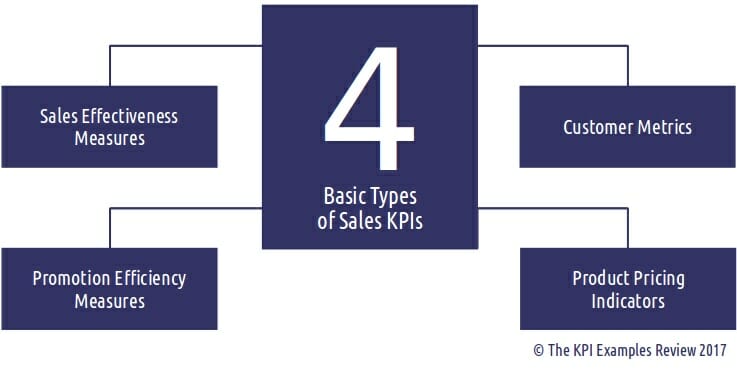KPI reporting can be time consuming, but good reports are essential to data-driven business. Key performance indicators and metrics must be delivered as accessible, interactive reporting documents which give other staff and management key performance insights.
KPI’s are very important in helping a business achieve strategic goals while allowing management to gauge the actions of sales reps within the broader scope of your enterprise. If you take the time to consider what a good report needs to contain before creating your report, you can deliver meaningful results in under 10 minutes every time. The reports that you generate help managers realize where skill sets are best utilized.
Here we’ll be taking you through a look at essential daily KPI’s to request from your sales reps. We’ll also show you which KPI’s work best for weekly reports and exactly how to put together a clear-clear report for your directors, presidents, or partners.
Daily KPI’s from Your Reps
There are many key performance indicators which are essential to understanding how your staff body is functioning as a team. Project management metrics empower management with the information that they need to run a business optimally. Without the hard numbers behind budgets and performance data, communication and delegation within your enterprise are simply ineffective.
Every target-driven sales environment needs daily KPI reports aligned to the strategic goals of your company. Use all or any of the following daily KPI’s to help optimize your enterprise management.

Daily Sales Revenues
Price Per Unit Sold x Total Number of Units Sold for the Week / 7
= Daily Sales Revenue
This simple calculation lets you see which reps are pushing the most gross sales on a day to day basis. Graphing your daily sales revenue KPI over a weekly or monthly time-period gives a clear overview of underperforming and top achievers. Revenues don’t reveal as much insight as profit figures, however, they will allow you to perform certain types of analysis better. Daily sales revenues allow you to gauge the effect of additional funding and resources on potential profitability and growth.
Daily Sales Commissions
Request a daily sales commissions report from all of your reps to ensure that both parties are up-to-date and informed concerning progress towards goals, and possible incentives. Staying aware of the incoming commissions motivates reps and management while delivering key employee insights.
Daily Wages
Depending on the payment structure of your reps, you may need to include a daily wages KPI. By staying current with wages on a day-to-day basis, everyone knows what they are earning and you always know that you have the fees due to your reps factored into your budget. Some businesses use both wages and commissions. In this case, cite both KPI’s on a daily basis.
Daily ROI
Daily Sales Revenues / Total Daily Expenses, Wage & Commissions * 100
= Daily ROI
Return on investment for sales is a calculation which needs to factor in all costs in order to display any degree of accuracy. You need to include fuel, the cost of communications, and any external fees which may be involved in delivering sales, service and support to your customers. One should, however, keep in mind that certain sales pipelines only present a positive return on investment after a significant period of time.
Don’t always accept the daily ROI of your reps as a determining factor of their performance, but rather as a gauge of the efficiency of your funnels.
Opportunity Win Rate
Total Number of Sales Closed / Total Amount of Opportunities
= Opportunity Win Rate
This metric will show you which reps have the best closing rate. Sales hinges upon being able to seal the deal, making this KPI integral to finding out who is amassing leads and who is actually selling. Most successful sales managers see the opportunity win rate as one of the most important sales metrics. It allows for a clear overview of which reps are better at closing, which are better suited to each type of pipeline, and presents one with a world of new optimization possibilities when allocating resources to reps.
Weekly KPI’s

The close of every week must be followed by a comprehensive report of the key performance indicators reflecting immediate progress. Include any of these weekly KPI’s to help data-driven decision making by gaining a concise but highly-relevant overview of your business’ performance. Many of these weekly KPI’s could / should be included on your weekly report to upper management which we will cover shortly.
Lead-to-Sale Percentage
Total Number of Sales / Number of Leads * 100
= Conversion Rate
Comparing the lead-to-sale percentage across your reps is a great way to assess individual performance.
For example, if you made 30 sales for the month out of 100 potential leads then your sales to lead conversion rate is 30%. A lead-to-sale conversion rate will show managers which reps need additional training or replacement to a different department. Any reps falling below the company-wide sales average need individual attention in some way.
Average Cost Per Lead
Total Lead Acquisition Cost / Total Number of Leads
= Average Cost Per Lead
Obtaining an average cost per lead lets you know which reps are under-utilizing their budget, time, and resources. Many issues could be at the root of poor average cost per lead performance ranging from logistics dilemmas to understaffing issues.
Get a weekly report covering the average cost of your reps’ lead acquisition, and you’ll soon discover where your sales teams and pipelines need work.
Quote to Close Ratio
Weekly Quote Total / Closed Weekly Sales * 100
= Closing Ratio Percentage
The quote to close ratio KPI gives you a great indication of how quickly to follow up on prospects within your sales funnel. Sales reps often fail to perform due to quoting too early or too late. Once you find the right balance within your funnel, your reps will all be closing more sales thanks to attentive quoting at precisely when it’s wanted.
Sales Lead to Close Ratio
Weekly Sales Leads Total / Closed Weekly Sales Total * 100
= Sales Leads to Close Ratio Percentage
This KPI shows overall sales efficiency. Depending on your organizational structure, you may want to run this metric for both raw leads and qualified leads independently. You can run the sales leads to close ratio KPI on specific geographical areas in order to get a better feel for where you need to devote your time and resources.
Prospecting Activity
Your sales teams need to capture as much data as possible concerning the resources devoted to seeking and obtaining new leads. Let management and sales staff keep track of calls, emails, meetings, time spent traveling, service or product demos, and any other marketing activities applicable to your sales funnel.
Successful sales prospecting relies on information. Any substantial changes in statistics are usually a key indicator of growth and decline, marking areas that you can improve, replicate, or expand upon as you now know the connection. Capture and include as many prospecting activity metrics as KPI’s as possible to truly understand your potential customers.
Average Purchase Value
Total Value of Weekly Sales / Total Number of Weekly Sales
= Average Purchase Value
The average purchase value KPI gives you a measure of the average sales value of each transaction. Average purchase values need to be segmented according to specific demographics in order to reach an accurate comparison of your marketing efforts. This KPI also allows you to identify which reps are best at selling high and low-end products and services. Certain staff may be far more productive when assigned a particular demographic.
Sales by Product Line
Sales by product line will let you identify the most lucrative products and services in your range, while also uncovering which sales pipelines need better sales prospecting and lead nurturing.
Sales by Channel
This strategic KPI works on both short-term and long-term scales. It shows you exactly which areas of customer acquisition are netting you the most revenue.
Client Meetings Attended
The metrics for meetings attended is fantastic for weekly sales reports. Managers are awarded insights into which staff is making the most of their time, and which would be more productive with less out-of-office time.
Weekly Reporting to Upper-Management
Sales managers will need to deliver a selection of KPI’s and performance metrics to their directors, vice presidents, boards of staff, and other superiors. Weekly sales reports can also be shared between departmental heads to ensure that inter-company collaboration is functioning optimally with communications clear throughout.
A weekly sales report needs to present a comprehensive but concise overview of current sales, your team’s progress towards existing goals, revenues and costs, as well as growth. Additionally, recommendations for organizational and staffing changes which need to be passed by upper-management can be suggested along-side the data to back up the decision.
Putting Together a Winning Weekly Reports

When deciding which key performance indicators to include on your weekly reporting, take the time to compare possible metrics against the goals of your enterprise.
If the KPI you wish to cite doesn’t directly correspond to a strategic insight matched to the vision and operation of your business, then no one but you will be able to find any value in it without a lengthy explanation. Simply put, not all metrics are KPI’s and not all KPI’s should be on every weekly report.
There are, however, basic components which must be on every report. Regardless of the type of business, you do or the product/service supplied, good sales reports will carry these following components at a minimum.
Components of a Weekly Report
The sales and performance information of your reps need to be compiled as a weekly report. Make sure that your report contains all of the necessary relevant information such as the branch name, team, and contact details.
Every good report will start off with the date and the time period that the report will be covering. In this case, it’s a weekly duration. Next, it should list the current sales revenue against the year-end target, also displayed in a clear to read manner.
Progress towards your sales target for the month is handy, while a color-coded key and/or structured formatting always helps to keep everything readable. List the KPI’s which you’ll be reporting with a breakdown for each employee, product, or project that you’re reporting on. Keep every week’s report standardized and accompany each report with a short memorandum.
Crafting a Data-Driven Memorandum
Your memorandum should begin with the week’s main accomplishments.
For example, exceeding performance goals by meeting a sales quota early should be an opening statement which is best backed up by a useful metric or projection for next week’s growth based on this week’s numbers. In addition, be sure to provide a meaningful reason for any shortfalls in sales. If a public holiday resulted in you being shut for a day, or an IT-failure interrupted trading for hours, cite the disturbance. This will help the reader understand the full context of the report without needing to be there.
A good basic set of KPI’s to begin with are:
– Weekly Sales Wages
– Weekly Sales Commissions
– Weekly Sales Revenues
– ROI
– Weekly ROI
Feel free to include any other metric which is directly relevant to the organizational structure, strategic vision, and goals of your enterprise. Just keep in mind that directors don’t want to see hoards of raw data. Rather, provide meaningful results which are supported by rich visuals and explanations in clear-speech. Avoid ambiguity and share all results relevant to the profitability and management of your business.
Ideas, tactical advancements, staffing issues, infrastructure suggestions, and any other motivations for change should be discussed openly but supported by the numbers needed to make your reasoning understood.
Growth, Analysis & Your Own Basic Weekly Sales Template
Not all enterprises and business owners will want extensive reports with lengthy memorandums. Smaller businesses will get by and function better with a small selection of meaningful KPI’s reporting the basics.
In the early stages of growth, staying simple and focused is often better than getting lost along a progression of endless optimization. Once established, there are endless ways to analyze information, using key performance indicators as a cornerstone of actionable reporting and data segmentation.
Take a look at our weekly sales report template if you need a spreadsheet to begin crafting insightful daily and weekly reports.
_____
Questions or comments? Contact SPOTIO at [email protected] or comment below.
SPOTIO is the #1 field sales acceleration and performance management software that will increase revenue, maximize profitability, and boost sales productivity.
Want to see a product demonstration? Click here to see how SPOTIO can take your sales game to the next level.
![Weekly Reports Sales Manager Should Run [with Template]](https://spotio.com/wp-content/uploads/2025/09/Weekly-Reports-Sales-Manager-Should-Run-with-Template_FI.png)





